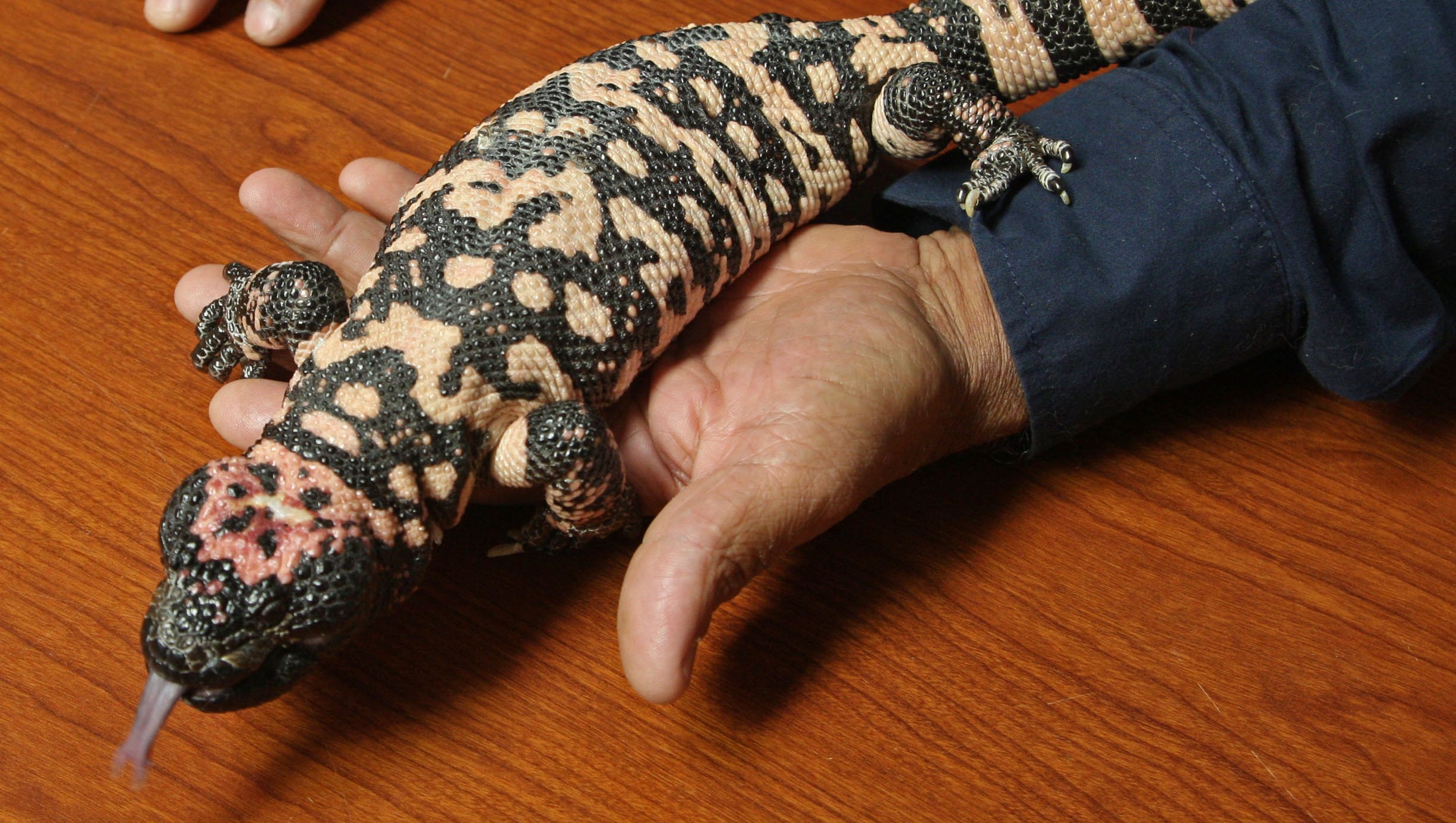Gila monsters get a bad rap. If their name alone doesn’t elicit fear, the fact that their bite is venomous does.
A Tucson man recently claimed in a viral TikTok video that Gila monsters are among the most poisonous lizards in the world.
While it is true that Gila monsters are venomous, this reptile with pebble-textured, brightly colored skin isn’t as dangerous as you think.
The Arizona Republic talked to two experts to clear up misconceptions about this often misunderstood creature, the only venomous lizard in the United States.
Katelyn Garcia is the education and outreach director at the Phoenix Herpetological Sanctuary and Maureen Roland is the managing director for the Banner Poison and Drug Information Center in Maricopa County. Here’s what they had to say.
Arizona’s iconic saguaro: How fast do they grow? How big do they get? All your Q’s answered
Where do Gila monsters live?
The Gila monster, named after the Gila River basin, is found mostly in western and southern Arizona. It is one of two venomous lizards in North America (the other is found in Mexico) and one of 49 lizard species in Arizona.
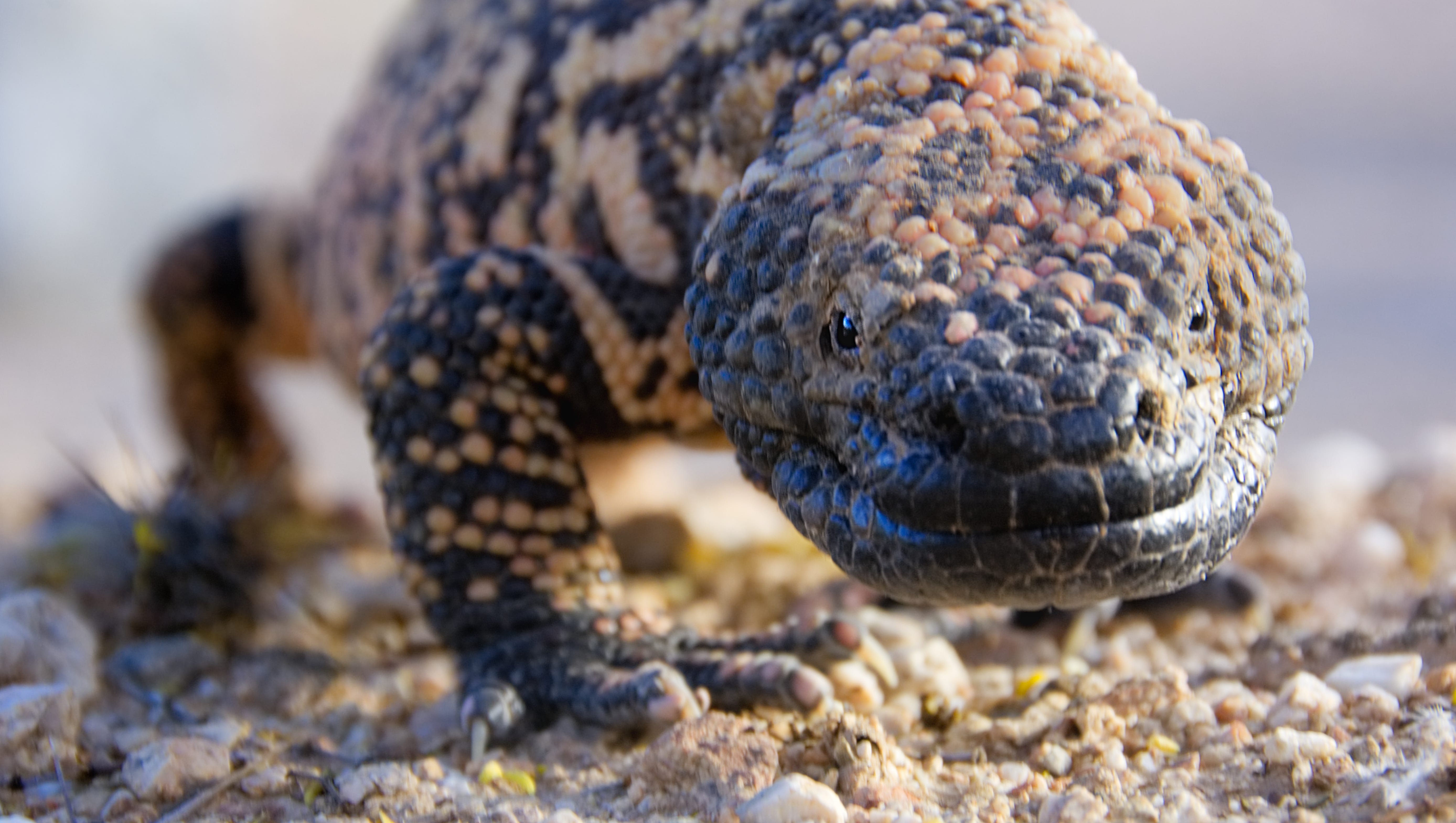
Gila monsters also can be found in southern Utah, eastern New Mexico and parts of Nevada and Mexico.
Seeing a Gila monster is rare, Garcia said. Gila monsters spend 90% of their lives underground. They are mostly found where there are a lot of rocks.
You’re most likely to spot a Gila monster from March through November. They typically hibernate from the end of November through February.
All about javelinas: Are they pigs? Are they dangerous? Here’s what to know
What does a Gila monster look like?
According to the Arizona-Sonora Desert Museum in Tucson, the Gila monster has a large head, small beady eyes and a short, fat tail. The colors of its bumpy, beaded skin are usually black and bright pink or orange, which help camouflage it in its environment.
The Gila monster can grow to 22.5 inches in length, weigh up to 5 pounds and live over 35 years in captivity.
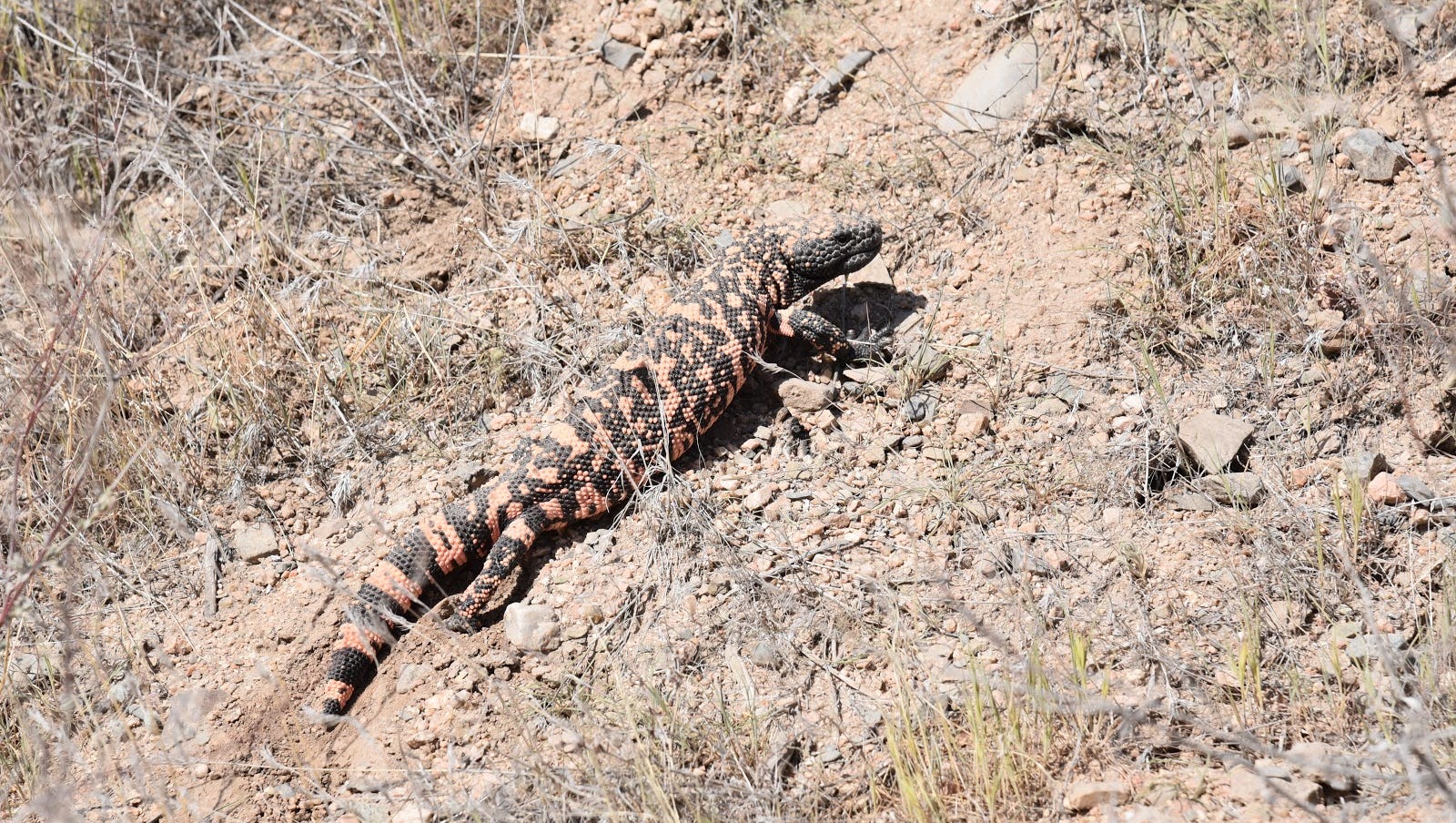
What do Gila monsters eat?
Gila monsters eat a lot of things that are found in nests, Garcia said. Particularly, they eat the eggs of quail and other birds, other lizards and snakes. They also prey on newborn rodents and rabbits.
“Gila monsters are lazy in their hunting,” Garcia said. “They are carnivores but they want to eat stuff that is easy for them to get to and doesn’t require a lot of work, especially since they are slow. But as far as we know about them, Gila monsters only eat three to 10 times a year.”
Garcia said it takes a long time for reptiles to die of starvation. Reptiles, especially carnivorous species, have slow metabolisms.
“They don’t burn a lot of calories, so they don’t need that constant amount of food,” Garcia said. “Especially being cold blooded, they are not regulating their body temperatures all the time.”
Bill Williams River: For some of the best birding in Arizona, try this less-visited destination
Do Gila monsters attack people?
Gila monsters are normally docile and easygoing, Garcia said. They do not consider humans a food source. They also are not aggressive to humans, but will open their mouths and hiss or bite if they feel threatened by a person or predator.
Has a Gila monster ever killed a human?
There are no recorded deaths caused by a Gila monster bite, Garcia and Roland said. In fact, there isn’t an antivenom for this lizard because there are few recorded bites and drug companies don’t want to make a product that has no demand.
Rattlesnakes aren’t as scary as you think: Why this reptile deserves respect
How poisonous is a Gila monster?
Roland said she sees two to three Gila monster bites a year.
When a Gila monster bites, its jaws typically clamp on firmly and grind into the area they are biting. The venom comes from their gums, through their teeth and then into the skin.
A Gila monster bite can cause swelling, tissue damage or infection. Roland has seen severe bites where a person has had to get skin grafts.
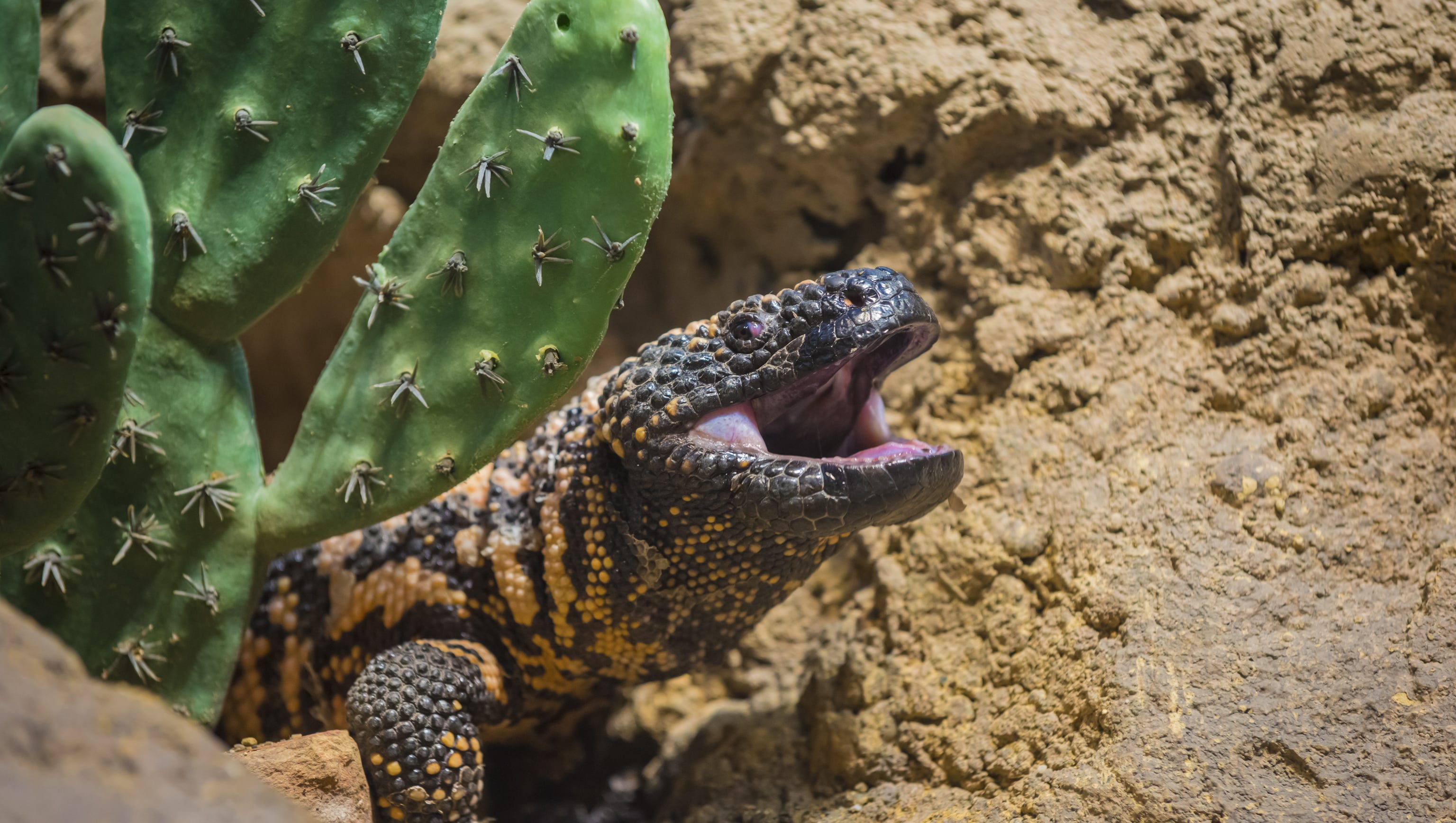
“It depends on how long the Gila monster is attached to the person, how long till a person gets care and how much venom is distributed into the tissue to see the severity of it,” she said.
Garcia said the effects of a bite depend on the person and what kind of care is received.
“Venom in general is hard to estimate,” Garcia said. “There are different kinds of venom. Even with a Gila monster or a rattlesnake, if two people get bit by the same animal they could have completely different reactions.
“The only thing that people should worry about is doctors not knowing how to treat Gila monster bites and getting secondary injuries from the wrong treatment. And that’s not really the Gila monster’s fault.”
Gila monsters mostly use their venom to ward off predators.
“They are slow, nocturnal and don’t really like to have human interaction,” Roland said. “When there is a bite, it’s usually defensive. Some bites can be accidental; for example, if you are in an area that they might be habitating. But when we do see (bites) it’s usually because someone is trying to capture them or mess with them.”
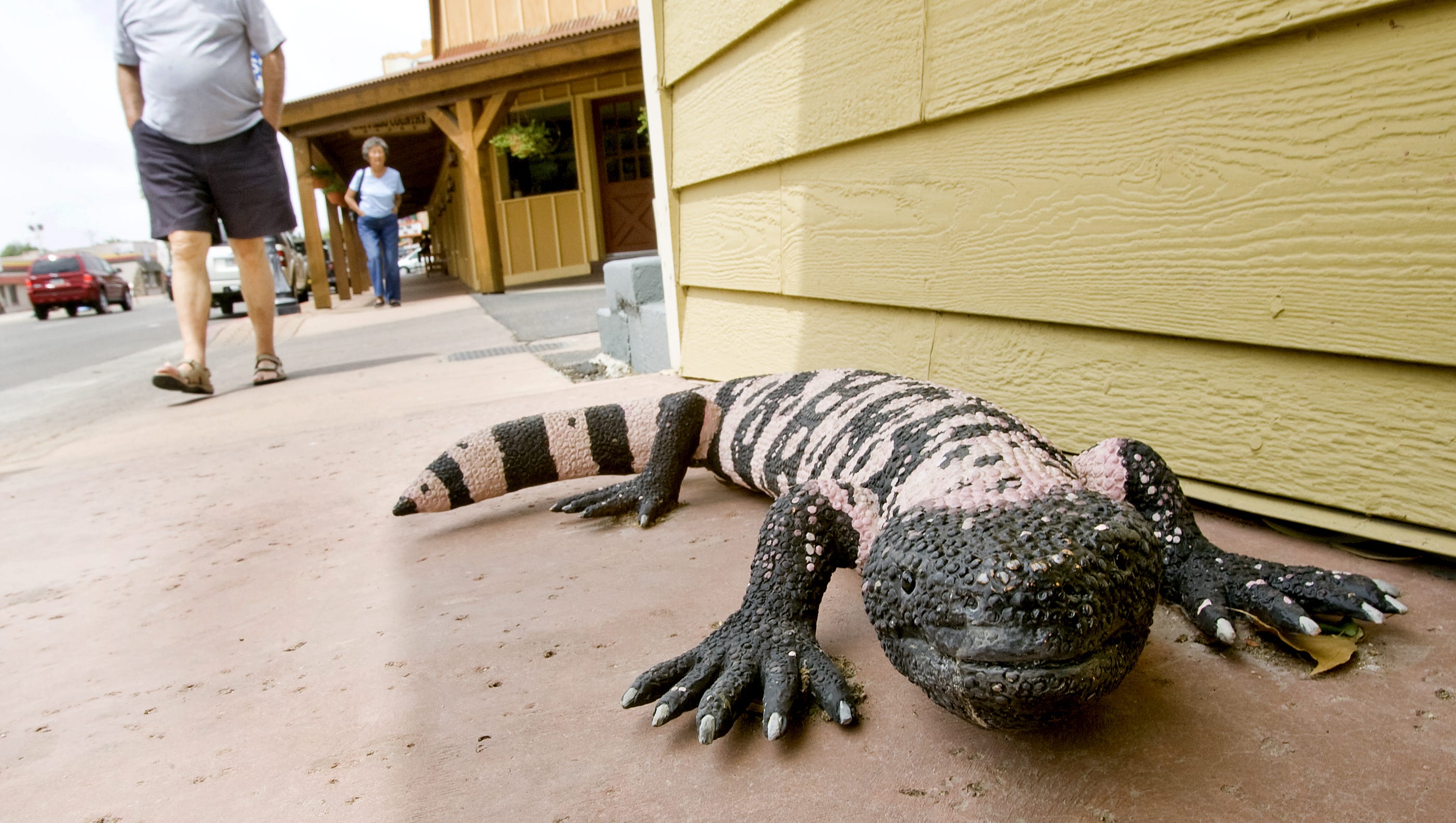
What happens if a Gila monster bites you?
Roland recommends calling a poison control center like Banner Poison and Drug Information Center. Nurses answer the phone 24 hours a day. Call 800-222-1222.
While awaiting help, Roland said the first thing to do is try to get the Gila monster off the person. Roland learned from a park ranger that one way to do that is to lower the Gila monster to the ground. It will likely release and get away from you.
“Similarly to rattlesnakes and scorpions, these are critters that know that we are not going to be their food for dinner that night,” Roland said. “Typically when we are bit by something like a Gila monster it’s accidental or we are going into their territory.”
Mosquitoes in Arizona: Why are there so many and what diseases do these tiny menaces carry?
Is a Gila monster a good pet?
Gila monsters are protected by Arizona law. It is illegal to own a Gila monster or even touch one in the wild here.
If you find a Gila monster in your home or yard, Garcia suggested calling Arizona Game and Fish at 602-942-3000 to see what local groups are permitted to remove Gila monsters.
If you call an animal removal service, ask if it has a wildlife services permit, which allows it to legally relocate protected animals.
What good are Gila monsters?
- Gila monsters are a form of natural pest control since they eat baby rodents.
- Gila monster venom has been used to create a diabetes drug. According to the Office of Research and Development at the U.S Department of Veteran Affairs, in the mid-1990s Drs. John Eng and Jean-Pierre Raufman found that a hormone in the venom of the Gila monster stimulates the body’s insulin production. A synthetic version of that hormone was approved for medical use by the FDA in 2005.
Learn more about reptiles in Arizona
Want to learn more about the variety of reptiles in Arizona? Visit the Phoenix Herpetological Sanctuary, a nonprofit organization that promotes conservation of native and nonnative reptiles through education, summer camps, rescue and rehabilitation. The sanctuary is also a surrender facility, meaning it will accept reptiles people no longer want as pets.
Can’t visit in person? Follow the sanctuary on Instagram, Facebook or TikTok for educational videos and photos of reptiles.
Details: 8 a.m.-5 p.m. Mondays-Saturdays. 20701 N. Scottsdale Road, Scottsdale. 480-513-4377, https://www.phoenixherp.com.
You can connect with Arizona Republic Culture and Outdoors Reporter Shanti Lerner through email at shanti.lerner@gannett.com or you can also follow her on Twitter.

